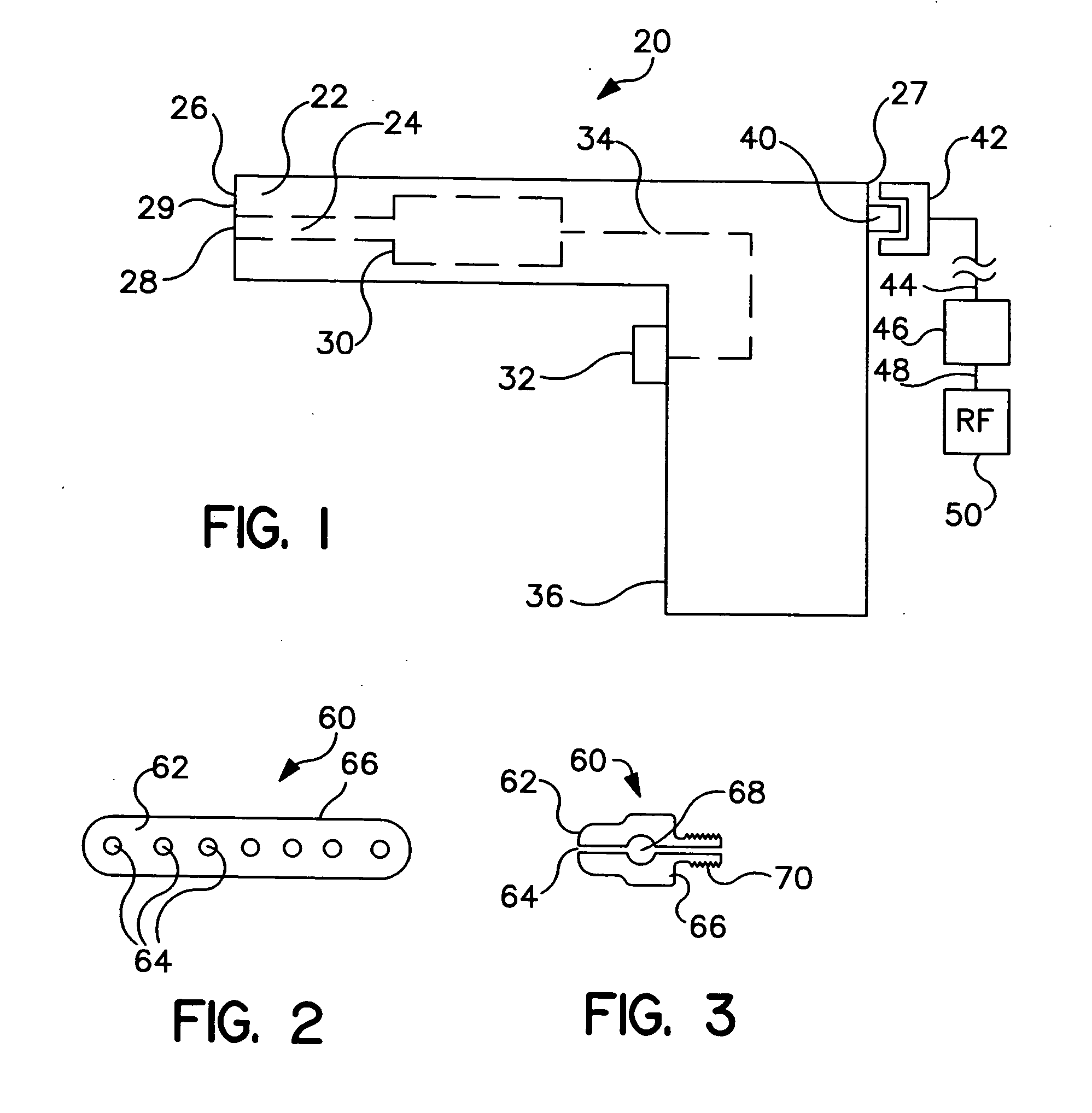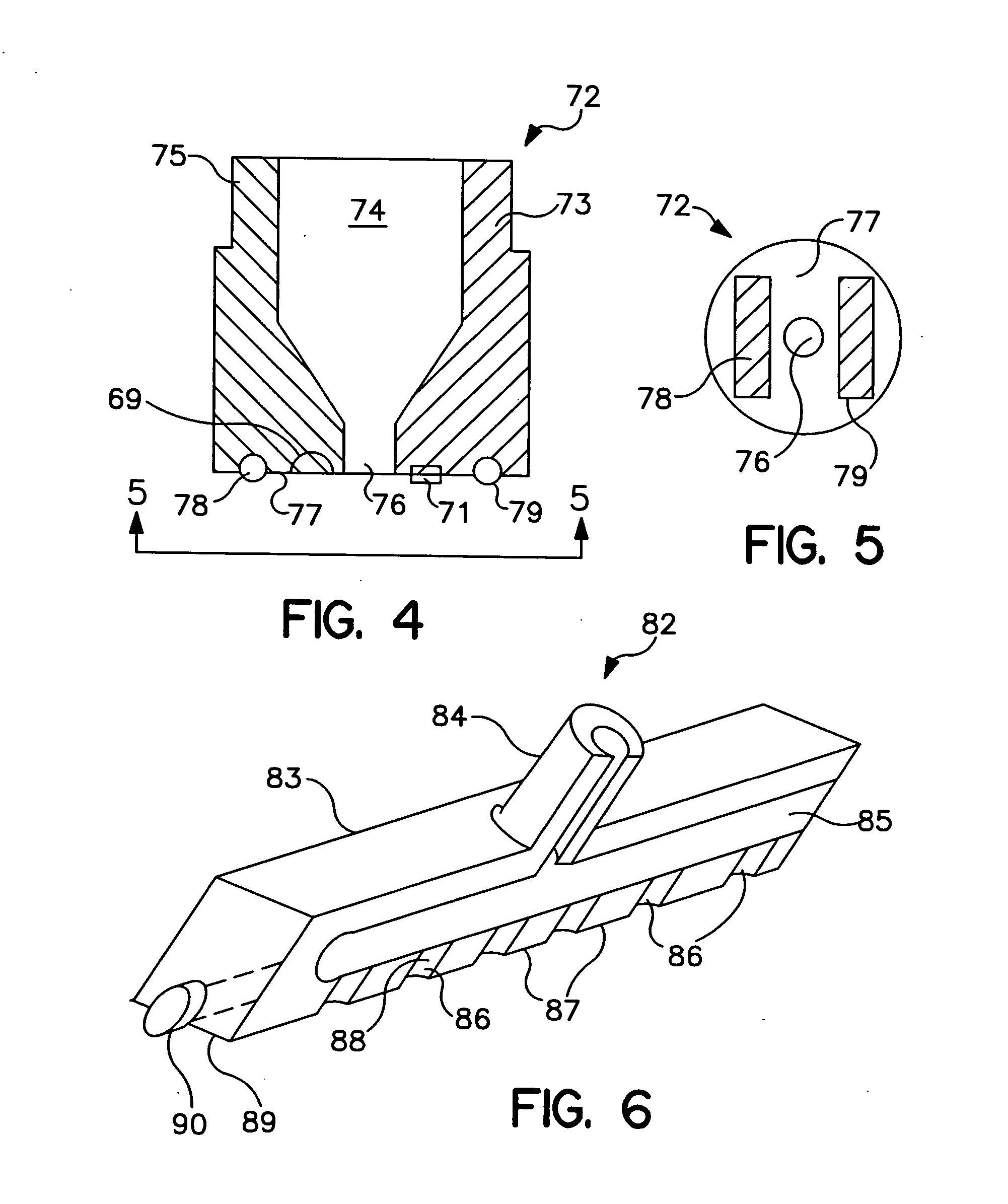Device and method for needle-less interstitial injection of fluid for ablation of cardiac tissue
a technology of interstitial injection and ablation device, which is applied in the field of devices for ablation of cardiac tissue, can solve the problems of disrupting the normal path of depolarization events, disrupting the normal propagation of electrical impulses, and disrupting the normal activation of atria or ventricles, so as to achieve rapid completion of lesion patterns
- Summary
- Abstract
- Description
- Claims
- Application Information
AI Technical Summary
Benefits of technology
Problems solved by technology
Method used
Image
Examples
Embodiment Construction
[0036] The following detailed description should be read with reference to the drawings, in which like elements in different drawings are numbered identically. The drawings, which are not necessarily to scale, depict selected embodiments and are not intended to limit the scope of the invention. Several forms of the invention have been shown and described, and other forms will now be apparent to those skilled in art. It will be understood that embodiments shown in drawings and described below are merely for illustrative purposes, and are not intended to limit the scope of the invention as defined in the claims, which follow.
[0037]FIG. 1 is a schematic view of a needle-less fluid injector device 20 having generally a distal end 26, a proximal end 27, and a handle 36. Needle-less fluid injector 20 includes a barrel or housing 22 having a fluid lumen 24 within. Fluid lumen 24 can terminate distally in a discharge orifice or port 28 and be in fluid communication with a pressure applicat...
PUM
 Login to View More
Login to View More Abstract
Description
Claims
Application Information
 Login to View More
Login to View More - R&D
- Intellectual Property
- Life Sciences
- Materials
- Tech Scout
- Unparalleled Data Quality
- Higher Quality Content
- 60% Fewer Hallucinations
Browse by: Latest US Patents, China's latest patents, Technical Efficacy Thesaurus, Application Domain, Technology Topic, Popular Technical Reports.
© 2025 PatSnap. All rights reserved.Legal|Privacy policy|Modern Slavery Act Transparency Statement|Sitemap|About US| Contact US: help@patsnap.com



